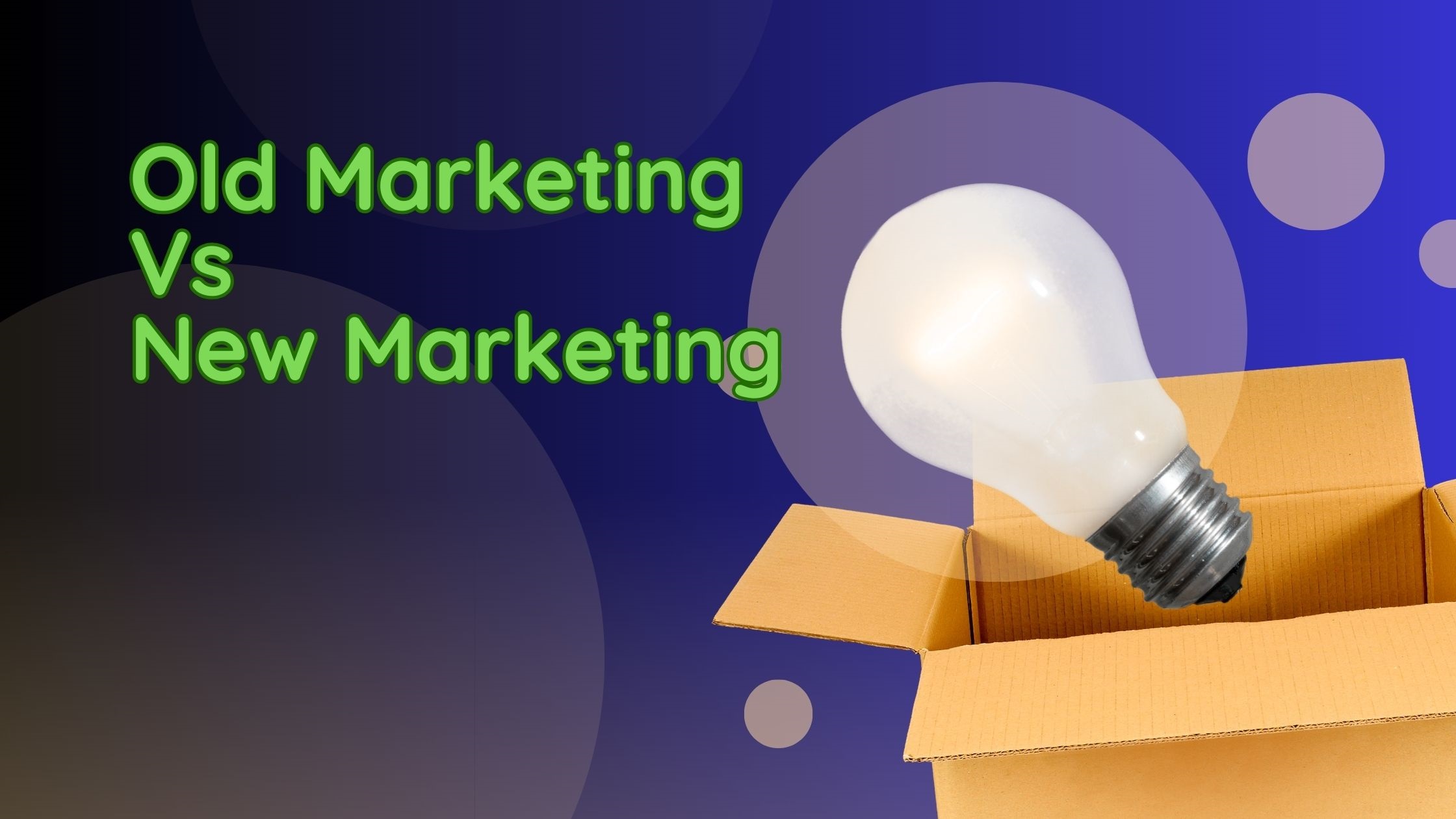A customer value-driven marketing strategy is crucial for businesses in 2024 to effectively nurture their customers, improve their bottom line, and increase ROI. It involves understanding and catering to the needs, desires, and behaviors of customers. By adopting a customer-centric approach, businesses can create a strong value proposition, deliver targeted messaging, provide personalized experiences, drive customer retention and brand loyalty, and achieve competitive differentiation through data-driven decision making.
In this complete guide, we will explore the critical components of a customer value-driven marketing strategy and provide examples for inspiration, helping businesses to create impactful marketing strategies that resonate with their target audience.
Key Takeaways:
- A customer value-driven marketing strategy focuses on understanding and catering to the needs, desires, and behaviors of customers.
- It involves adopting a customer-centric approach and creating a strong value proposition.
- Targeted messaging and personalized experiences play a key role in driving customer retention and brand loyalty.
- Data-driven decision making is crucial for achieving competitive differentiation and optimizing marketing efforts.
- Successful customer value-driven marketing strategies can inspire businesses to create impactful marketing campaigns.
What is a Customer Value Driven Marketing Strategy?
A Customer Value Driven Marketing Strategy is a customer-centric approach that places customers at the center of all marketing and business decisions. It involves understanding and catering to their needs, desires, and behaviors to cultivate long-lasting, meaningful customer relationships. This strategy goes beyond just selling products or services; it aims to co-create value with customers and leverage their insights to inform marketing strategies.
A Customer Value Driven Marketing Strategy focuses on delivering exceptional value to customers throughout their buying journey. By understanding customers’ pain points, preferences, and motivations, businesses can tailor their offerings and messaging to meet their needs effectively. It involves continuously listening to customers and leveraging customer insights to refine marketing strategies, enhance the value proposition, and deliver personalized experiences.
With a customer-centric approach, businesses can differentiate themselves from competitors by providing unique and valuable solutions that resonate with their target audience. By aligning the marketing strategy with customer needs and expectations, businesses can build trust, loyalty, and brand advocacy.
Implementing a Customer Value Driven Marketing Strategy requires a deep understanding of customer insights. By leveraging data analytics, market research, and customer feedback, businesses can gain valuable insights into customer preferences, behaviors, and buying patterns. This understanding allows businesses to develop targeted messaging, personalized experiences, and value propositions that directly address customer needs and desires.
The Importance of a Customer Value Driven Marketing Strategy
A customer value-driven marketing strategy is essential for businesses to achieve long-term success. By adopting a customer-centric approach, companies can build brand loyalty, enhance customer satisfaction, and drive profitability. Let’s explore the key reasons why a customer value-driven marketing strategy is crucial.
Boosting Brand Loyalty
Customer value-driven marketing strategies prioritize delivering consistent value to customers. By focusing on their needs and preferences, businesses can create personalized experiences that foster a deep sense of loyalty. When customers feel valued and understood, they are more likely to remain loyal to a brand, making repeat purchases and recommending it to others.
Improving Customer Satisfaction
With a customer value-driven marketing strategy, businesses prioritize understanding their customers, their pain points, and their desired solutions. By tailoring products, services, and interactions to meet these needs, companies can significantly enhance customer satisfaction. Satisfied customers are more likely to become brand advocates, spreading positive word-of-mouth and helping to attract new customers.
Increasing Profitability through Customer Retention
A customer value-driven marketing strategy focuses on building strong relationships with customers, which ultimately leads to increased profitability. By prioritizing customer satisfaction and providing exceptional value, businesses can improve customer retention rates. Retaining existing customers is less costly than acquiring new ones and can significantly impact a company’s financial performance.
Facilitating Innovation with Customer Insights
A customer value-driven marketing strategy involves actively seeking and leveraging customer feedback and insights. By understanding customer preferences, businesses can identify areas for improvement, implement innovative solutions, and stay ahead of the competition. Ultimately, this approach promotes continuous growth and allows companies to adapt their strategies based on real-time customer data.
Overall, a customer value-driven marketing strategy is crucial for businesses looking to maximize customer satisfaction, foster loyalty, and drive profitability. By prioritizing the needs and preferences of customers, companies can create meaningful connections, build strong brand loyalty, and achieve long-term success in today’s highly competitive market.
Key Components of a Customer Value Driven Marketing Strategy
A customer value-driven marketing strategy encompasses various key components that work together to drive success. Let’s explore each component in detail:
Marketing Mix
The marketing mix comprises the four essential elements: product, price, place, and promotion. When developing a customer value-driven marketing strategy, businesses must carefully consider each aspect of the marketing mix. This involves creating products that meet customer needs, determining competitive pricing, selecting appropriate distribution channels, and designing effective promotional campaigns.
Marketing Objectives
Marketing objectives lay out the specific goals that a business aims to achieve through its marketing efforts. These objectives should align with overall business objectives and be measurable, realistic, and time-bound. Some common marketing objectives include increasing brand awareness, driving sales, expanding market share, and improving customer satisfaction.
Marketing Budget
A well-defined marketing budget ensures that resources are allocated efficiently and effectively. It is crucial to allocate adequate funds to different marketing activities, such as advertising, research, content creation, and digital marketing. By setting a clear budget, businesses can prioritize their marketing initiatives and achieve optimal results.
Competitive Analysis
Conducting a comprehensive competitive analysis helps businesses understand their market position, identify competitors, and uncover opportunities for differentiation. By assessing competitors’ strengths, weaknesses, and strategies, businesses can better position themselves and develop unique value propositions that resonate with their target audience.
Segmentation, Targeting, & Positioning
Segmentation involves dividing the market into distinct groups based on characteristics such as demographics, psychographics, and behavior. Targeting involves selecting specific segments to focus on, considering factors such as market size, growth potential, and competitive intensity. Positioning involves establishing a unique and compelling position in the minds of the target audience by highlighting key differentiators and benefits.
Content Creation
Content creation plays a crucial role in customer value-driven marketing strategies. Businesses need to create high-quality content that educates, engages, and adds value to their target audience. This can include blog posts, articles, videos, social media content, and more. By consistently delivering valuable content, businesses can establish themselves as trusted experts and build strong relationships with their customers.
Metrics & Key Performance Indicators
Metrics and key performance indicators (KPIs) are essential for measuring the success of a customer value-driven marketing strategy. Businesses need to define specific metrics and KPIs that align with their objectives and track them regularly. This could include metrics like customer lifetime value, customer satisfaction, conversion rates, website traffic, social media engagement, and more. By analyzing these metrics, businesses can gain valuable insights and make data-driven decisions to optimize their marketing efforts.
By integrating these key components into their marketing strategy, businesses can develop a customer value-driven approach that delivers exceptional experiences, builds customer loyalty, and drives long-term success.
Understanding Your Target Audience
In order to develop a successful customer value-driven marketing strategy, it is crucial to have a deep understanding of your target audience. By delving into their demographics, psychographics, and behavioral data, you can gain valuable insights that will help you tailor your marketing efforts to meet their expectations.
Demographics include characteristics such as age, gender, income, and location. By analyzing these factors, you can create targeted marketing campaigns that resonate with specific groups within your target audience.
Psychographics, on the other hand, delve into the attitudes, beliefs, values, and interests of your audience. This information gives you a deeper understanding of their motivations and allows you to craft messaging that speaks directly to their needs and desires.
In addition to demographics and psychographics, behavioral data plays a crucial role in understanding your target audience. By analyzing their past interactions with your brand, such as purchasing behavior and engagement with marketing campaigns, you can gain insights into their preferences, habits, and challenges.
Identifying the needs and challenges of your target audience is vital for developing a customer value-driven marketing strategy. By understanding their pain points and addressing them through your products or services, you can create value and build meaningful connections with your customers.
There are various tools and methods you can use to gather information about your target audience. Market research, surveys, customer interviews, and advanced marketing analytics are effective ways to collect valuable data. By leveraging these insights, you can refine your marketing strategies and create compelling campaigns that resonate with your target audience.
The Benefits of Understanding Your Target Audience
| Benefits | |
|---|---|
| 1. Personalized Marketing | You can tailor your marketing efforts to meet the specific needs and preferences of your target audience, increasing the effectiveness of your campaigns. |
| 2. Improved Customer Retention | By understanding your audience’s needs and challenges, you can create products and services that address their pain points, increasing customer satisfaction and loyalty. |
| 3. Targeted Messaging | Knowing your audience’s demographics, psychographics, and behavior allows you to craft messaging that speaks directly to their interests and motivations, making your marketing more persuasive. |
| 4. Competitive Advantage | Having a deep understanding of your target audience gives you a competitive edge by enabling you to differentiate your brand and effectively communicate the unique value you offer. |
By understanding your target audience and their needs and challenges, you can create a customer value-driven marketing strategy that positions your brand for success. This knowledge will empower you to deliver personalized experiences, create compelling value propositions, and make data-driven decisions that drive customer satisfaction, retention, and profitability.
Creating a Compelling Value Proposition
A compelling value proposition is a crucial element of a customer value-driven marketing strategy. It serves as a concise statement that communicates the unique value your product or service offers to meet customer needs. In today’s competitive landscape, a strong value proposition can make all the difference in attracting and retaining customers.
To create a compelling value proposition, it is essential to deeply understand your target audience and their specific needs. By conducting thorough market research, collecting customer feedback, and analyzing industry trends, you can identify the pain points and desires that your product or service can address.
Customer needs should be at the core of your value proposition. By clearly articulating how your offering fulfills those needs, you can capture the attention and interest of your target audience. Use persuasive language that emphasizes the direct benefits and outcomes customers can expect from choosing your solution.
However, customer needs alone are not enough to set your company apart from competitors. To truly stand out, you must highlight your competitive differentiation. This involves showcasing the unique features, qualities, or advantages that make your product or service superior to alternatives in the market.
Here are some effective techniques and considerations for crafting a compelling value proposition:
- Focus on outcomes: Clearly communicate how your product or service can help customers achieve their desired outcomes, whether it’s saving time, enhancing productivity, or improving their well-being.
- Address pain points: Highlight specific challenges or pain points that your offering can alleviate. Position your product or service as the solution that solves those problems effectively.
- Use customer testimonials: Incorporate testimonials or case studies from satisfied customers to add credibility and demonstrate real-world results.
- Quantify value: Whenever possible, use data and statistics to quantify the value your offering delivers. This can help customers understand the tangible benefits they can expect.
By crafting a compelling value proposition that aligns with customer needs and incorporates elements of competitive differentiation, you can effectively communicate the unique value your product or service brings to the market. This can significantly enhance your marketing messages, attracting and converting your target audience.
Example Value Proposition:
The image above highlights an example value proposition for a fictional skincare brand called “Glowing Beauty.” This value proposition clearly states the brand’s unique selling points, which include organic ingredients, cruelty-free practices, and personalized skincare solutions tailored to individual customer needs. The value proposition appeals to environmentally conscious consumers who prioritize natural products and personalized experiences, setting Glowing Beauty apart from its competitors.
| Key Elements | Example Value Proposition: Glowing Beauty |
|---|---|
| Customer Needs | Experience healthier and radiant skin with customized skincare solutions made from organic ingredients. |
| Competitive Differentiation | Elevate your skincare routine with cruelty-free products that prioritize sustainability and individualized care. |
Delivering Personalized Experiences
Delivering personalized experiences is a crucial aspect of a customer value-driven marketing strategy. By tailoring your messaging and marketing efforts to meet the specific needs and preferences of individual customers, you can create meaningful connections and drive customer engagement. Personalization allows you to provide relevant content and offers that resonate with your target audience, fostering a sense of trust and loyalty.
Targeted Messaging
One key element of delivering personalized experiences is using targeted messaging. By segmenting your audience based on demographics, behavior, and other relevant factors, you can create tailored messages that speak directly to their needs and interests. Whether it’s crafting personalized emails, targeted social media ads, or tailored website content, this approach ensures that each customer receives the right message at the right time.
Customer Insights
Customer insights are essential for delivering personalized experiences. By gathering and analyzing data about your customers’ preferences, behaviors, and interactions with your brand, you can gain valuable insights into their needs and desires. This information allows you to create customized experiences that address their pain points, anticipate their needs, and provide solutions that align with their expectations. Leveraging customer insights helps you make informed decisions and develop effective marketing strategies.
Above image represents personalized experiences.
Retaining Customers and Building Brand Loyalty
Customer retention and building brand loyalty play a pivotal role in a customer value-driven marketing strategy. To achieve these objectives, businesses must consistently deliver value and provide exceptional customer experiences.
By prioritizing customer retention, businesses foster long-term relationships and enhance overall brand loyalty. This not only boosts customer satisfaction but also strengthens the chances of repeat business and positive word-of-mouth referrals.
To retain customers effectively, businesses can implement value-added services that go beyond the core offering. These services could include exclusive discounts, personalized recommendations based on customer preferences, or a loyalty program that rewards customer loyalty.
By offering these value-added services, businesses can further enhance customer retention and build a strong brand reputation. It demonstrates a commitment to meeting customer needs and going the extra mile to exceed expectations.
Take for example XYZ, a leading e-commerce platform that has successfully built brand loyalty through its value-added services. They offer free and fast shipping to their loyal customers, ensuring that they receive their purchases promptly and conveniently.
Another exemplary brand is ABC, a renowned cosmetics company known for its personalized beauty recommendations. Through their online portal, customers can receive tailored skincare routines and makeup suggestions based on their unique skin type and preferences. This level of customization not only enhances the customer experience but also reinforces brand loyalty.
Building brand loyalty is a gradual process that requires consistency and dedication. By continually offering value, personalization, and exceptional experiences, businesses can cultivate a loyal customer base that not only supports the brand but also advocates for it.
Leveraging Data for Data-Driven Decision Making
In the realm of customer value-driven marketing strategy, data serves as a powerful tool for making informed decisions. By harnessing the potential of marketing analytics and customer insights, businesses can drive their decision-making processes with data, ensuring optimal outcomes and effective resource allocation.
Data-driven decision making involves gathering and analyzing real-time data from various sources to gain valuable insights into customer behavior, market trends, and competitors’ strategies. With these insights, businesses can make intelligent decisions to optimize their marketing efforts and deliver exceptional customer experiences.
Marketing analytics enables businesses to measure and evaluate the performance of their marketing campaigns, channels, and initiatives. By utilizing tools and platforms that provide comprehensive data analysis, businesses can assess key metrics and KPIs (Key Performance Indicators) to determine the effectiveness of their strategies.
Customer insights, on the other hand, provide valuable information about customer preferences, needs, and expectations. By understanding customer behavior patterns, businesses can tailor their strategies to meet specific customer segments and deliver personalized experiences that resonate with their target audience.
Combining marketing analytics and customer insights empowers businesses to make more accurate and effective decisions. It allows them to identify opportunities, uncover potential challenges, and optimize their marketing mix to achieve maximum performance and ROI.
Data-Driven Decision Making Process
The data-driven decision making process involves several key steps:
- Identify the business objectives and the specific marketing goals.
- Gather relevant data from various sources, such as customer databases, market research reports, and social media platforms.
- Apply advanced analytics techniques to analyze and interpret the data, uncovering meaningful insights.
- Translate the insights into actionable strategies and initiatives.
- Implement the strategies and monitor their performance.
- Continuously measure and evaluate the results, making adjustments and refinements as necessary.
Data-driven decision making enables businesses to pivot quickly, adapt to changing market dynamics, and capitalize on emerging trends. It provides a solid foundation for creating customer-centric marketing strategies and delivering exceptional value to customers.
The Benefits of Data-Driven Decision Making
By leveraging data for decision making, businesses can unlock numerous benefits:
- Improved targeting and segmentation: Data-driven decision making allows businesses to identify and target specific customer segments more effectively, resulting in higher conversion rates and better customer experiences.
- Optimized marketing spend: By analyzing data, businesses can allocate their marketing budgets more efficiently, investing in channels and tactics that deliver the best results.
- Enhanced customer experiences: Data-driven decision making enables personalized and relevant customer engagements, fostering stronger customer relationships and loyalty.
- Increased competitiveness: By leveraging data and insights to inform decision making, businesses can gain a competitive edge by identifying and capitalizing on market opportunities before their competitors.
| Benefits of Data-Driven Decision Making | Description |
|---|---|
| Improved targeting and segmentation | Enables businesses to identify and target specific customer segments more effectively, resulting in higher conversion rates and better customer experiences. |
| Optimized marketing spend | Allows businesses to allocate their marketing budgets more efficiently, investing in channels and tactics that deliver the best results. |
| Enhanced customer experiences | Enables personalized and relevant customer engagements, fostering stronger customer relationships and loyalty. |
| Increased competitiveness | Gives businesses a competitive edge by identifying and capitalizing on market opportunities before competitors. |
Overall, data-driven decision making enables businesses to navigate the complexities of the modern marketing landscape and drive meaningful results. By harnessing the power of marketing analytics and customer insights, businesses can make informed decisions that lead to improved customer satisfaction, increased ROI, and sustainable business growth.
Examples of Successful Customer Value Driven Marketing Strategies
When it comes to implementing successful marketing strategies, there are numerous real-world examples that showcase the effectiveness of customer value-driven approaches. Examining these strategies can provide valuable insights and inspiration for businesses looking to enhance their own marketing efforts. By studying successful marketing campaigns from various industries, businesses can gain a deeper understanding of the tactics, messaging, and value propositions that resonate with their target audiences. Let’s explore a few examples:
Example 1: Apple’s Customer-Centric Approach
Apple’s marketing strategy is well-known for its customer-centric approach. The company focuses on developing products and services that cater to the needs and desires of its target audience. By prioritizing user experience, Apple has built a strong brand following and loyal customer base. Their value-driven marketing campaigns emphasize the unique features and benefits of their products, highlighting how they enhance the lives of their customers.
Example 2: Coca-Cola’s Emotional Branding
Coca-Cola has successfully implemented a customer value-driven marketing strategy through emotional branding. Their campaigns evoke positive emotions and a sense of happiness, aiming to connect with consumers on a personal level. By focusing on creating memorable experiences and associating their brand with joyful moments, Coca-Cola has fostered deep emotional connections with their customers, leading to increased brand loyalty.
Example 3: Amazon’s Personalized Recommendations
Amazon is renowned for its personalized marketing approach. By leveraging customer data and advanced algorithms, the e-commerce giant provides tailored product recommendations to each individual user. This customer value-driven strategy enhances the shopping experience, making it more convenient and enjoyable for customers. Amazon’s targeted messaging and personalized recommendations have contributed to their success in building customer loyalty and driving repeat purchases.
These examples highlight the power of customer value-driven marketing strategies in various industries. By focusing on understanding customer needs, delivering personalized experiences, and showcasing unique value propositions, businesses can build strong relationships with their target audiences and achieve long-term success.
Conclusion
A customer value-driven marketing strategy is paramount for businesses aiming to enhance customer satisfaction, foster brand loyalty, and drive profitability. By adopting a customer-centric approach, businesses can tailor their marketing efforts to meet the unique needs and preferences of their target audience, resulting in personalized experiences and long-lasting relationships.
The key to implementing a successful customer value-driven marketing strategy lies in gaining deep customer insights. By understanding the demographics, psychographics, and behavioral data of their target audience, businesses can create value propositions that resonate with their customers, differentiate themselves from competitors, and drive competitive differentiation.
Targeted messaging and personalized experiences further strengthen the customer value-driven approach. By leveraging customer insights, businesses can deliver tailored messages that address individual customers’ needs and preferences, enhancing customer retention and satisfaction. Moreover, by utilizing data-driven decision-making processes, businesses can optimize their marketing efforts, improve customer experiences, and drive better results.
In conclusion, embracing a customer value-driven marketing strategy enables businesses to prioritize customer needs, deliver personalized experiences, and foster brand loyalty. By employing a customer-centric approach that integrates value proposition, customer insights, targeted messaging, personalized experiences, and data-driven decision-making, businesses can stay ahead of the competition and drive long-term success.



